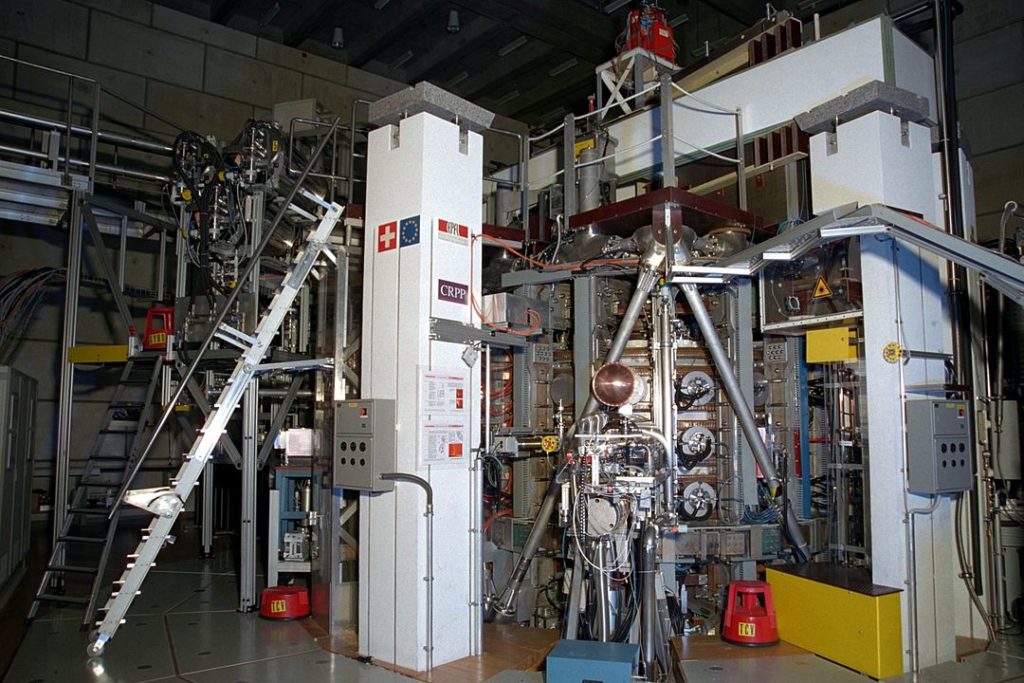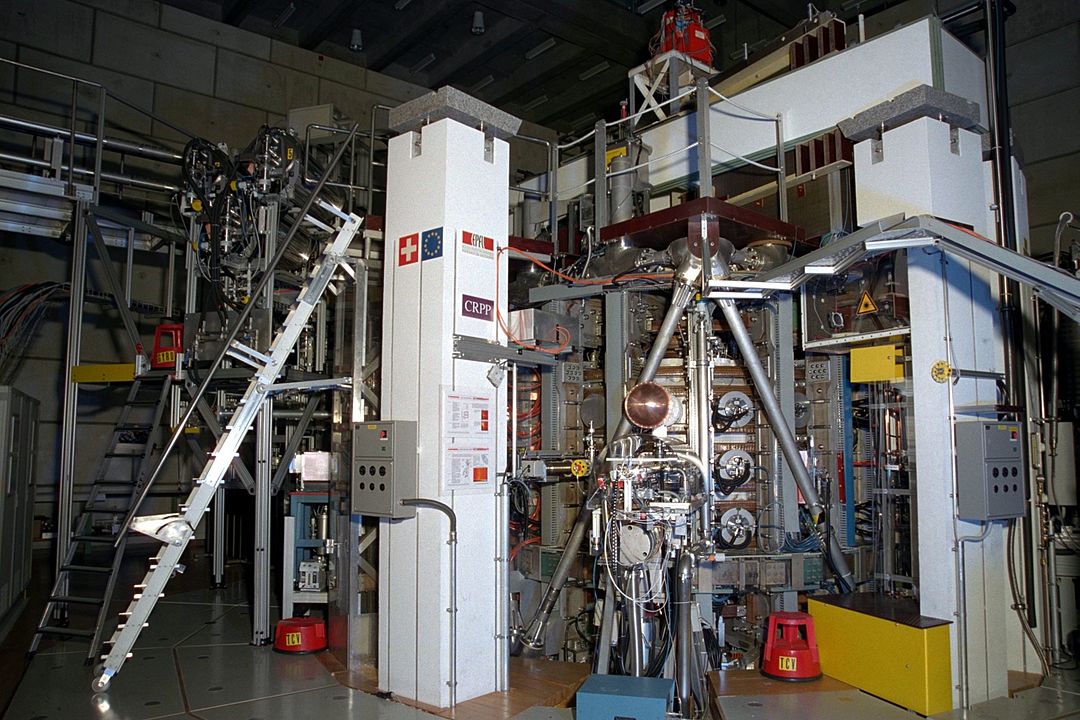
Could nuclear fusion power the Earth? Yes, but not in this half of the 21st century.
Nuclear fusion and nuclear fission are the two ways we can get energy out of an atom. Nuclear fission is the easiest of the two for us to perform on Earth. In nuclear fission, a neutron is fired at a uranium atom and it splits it. When the atom splits open, it releases energy, radiation, and more neutrons. The extra neutrons crash into other neutrons and the process continues until the fuel runs out. The energy is released as heat and can be used to make electricity. The fuel used in nuclear fission contains millions of times the energy stored in the equivalent weight of regular fossil fuel. However, nuclear fission obviously has its downsides. The fuel is hazardous when mined and the nuclear waste remains highly radioactive for potentially millions of years. There is also the potential for a meltdown. If something breaks in a nuclear reactor and the nuclear fuel cannot be cooled down quickly enough, the fuel can melt, and leach out of the reactor, causing a meltdown.
Nuclear fusion has none of these dangers. Nuclear fusion happens when two atoms are fused together. It is the process that powers stars, and happens under intense heat. In our sun, two atoms of hydrogen are forced together. Atoms repel each other because of the Coulomb force, but if there is enough energy, they can overcome this force and smash together. When two hydrogen atoms fuse, they make helium. The slight difference in the atomic mass between two hydrogen atoms and one helium atom is released as energy. This is a tiny amount, but if enough atoms collide, it adds up. The sun fuses 620 million tons of hydrogen into 616 million tons of helium every second. The resultant 4 million tons is released as energy. There are no dangers with nuclear fusion reactors. The fuel is all around us and if the reactor breaks, the reaction simply stops. The reaction also doesn’t produce carbon dioxide. It could produce infinite energy for the whole world.
So, could nuclear fusion power the Earth? The simple answer is, “yes”, but there are many problems that need to be overcome first. This year (2022), nuclear fusion took a huge jump forward when China’s Experimental Superconducting Tokamak reactor was able to sustain a reaction for 1,000 seconds and it produced a one-million-ampere current. To do that, it had to reach a temperature of 100 million ℃, which is ludicrously hot. The center of the sun is only about 15 million ℃. With each milestone that is reached, more investment money is poured into fusion research. Private investment far outweighs government investment, but that is the same with any source of power.
There are four main problems that need to be overcome before nuclear fusion can power the Earth. First, is the problem of heating and holding the fuel. The hydrogen fuel has to be heated until it is a plasma at about 100 million degrees Celsius. Heat is basically energy. The particles are given more energy using electro magnetic fields and they are controlled using incredibly strong superconducting magnets that are cooled to almost absolute zero. All of this requires a huge amount of power. If the fusion reactor is working, it can power itself, but if it fails, or before it starts, this power has to come from the regular power grid. If the fusion reactor powers itself, it is known as parasitic power. Currently, the experimental fusion reactors don’t make as much energy as is fed into them. To do this, they will have to be scaled up, which will take a long time to do. This is a problem that will be reduced as technology advances, but it is going to be a slow process.
The second problem is the radiation. In the nuclear fusion process, neutrons are released during the reaction and they are carrying massive amounts of energy. They can be used to produce electricity, but they need to be contained within something that can withstand such high amounts of energy for many years at a time. The idea is to coat the inside of the reactor with beryllium and tungsten. The beryllium will withstand the impacts of the neutrons and the tungsten has a high melting temperature so it can withstand the heat. How long it will be able to withstand a fusion reaction is not known.
The third problem is the fuel. Hydrogen is everywhere, but for a fusion reactor, deuterium and tritium are better fuels. They are isotopes of hydrogen and they can undergo fusion at lower temperatures than hydrogen. Deuterium is very abundant. 1 out of every 5,000 hydrogen atoms in the sea is deuterium. Tritium is not so abundant. It has a half life of 12 years and is very rare. One solution is to make it during the fusion process. It can be made using enriched lithium, but you need tritium to start the fusion reaction before you can use the reaction to make tritium.
The fourth problem is sustainability. The sun can sustain a fusion reaction because it can keep everything at very high temperatures through its enormous gravity. On Earth, it is harder to keep a fusion reaction going. Heat can be lost at any point in the process and if the heat in the plasma drops, the reaction will stop. To make the reaction self-sustaining, it has to produce enough energy to keep its own heat high enough.
Experts say that we could have successful fusion reactions during this decade. If all of the problems can be ironed out, the reactor then has to be scaled up to the point where it can produce enough power for the surrounding area. Then more reactors have to be built and everything connected to the powergrid. The people involved with fusion believe we will have successful reactors by 2050 and that most of our power will come from them towards the end of the 21st century. Unfortunately, that isn’t soon enough to combat climate change, but it is good news for the future. And this is what I learned today.
Sources:
https://en.wikipedia.org/wiki/Nuclear_fission
https://www.energy.gov/science/doe-explainsdeuterium-tritium-fusion-reactor-fuel
https://gizmodo.com/will-nuclear-fusion-ever-power-the-world-1848149991
https://www.energymonitor.ai/sectors/power/can-nuclear-fusion-power-the-race-to-net-zero
https://www.vox.com/22801265/fusion-energy-electricity-power-climate-change-research-iter
https://www.science.org/content/article/how-line-thermonuclear-reactor


[…] we will be able to come up with a cost-effective way of producing helium. There is some hope that a nuclear fusion reactor could produce helium as a byproduct of the reaction, but that won’t happen until towards […]